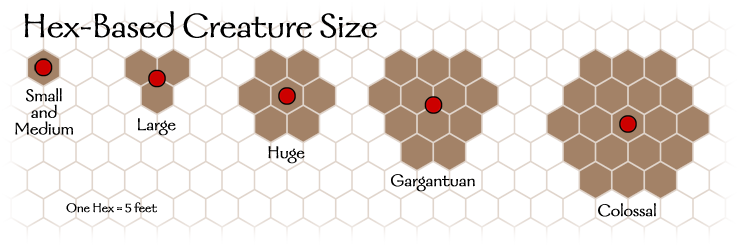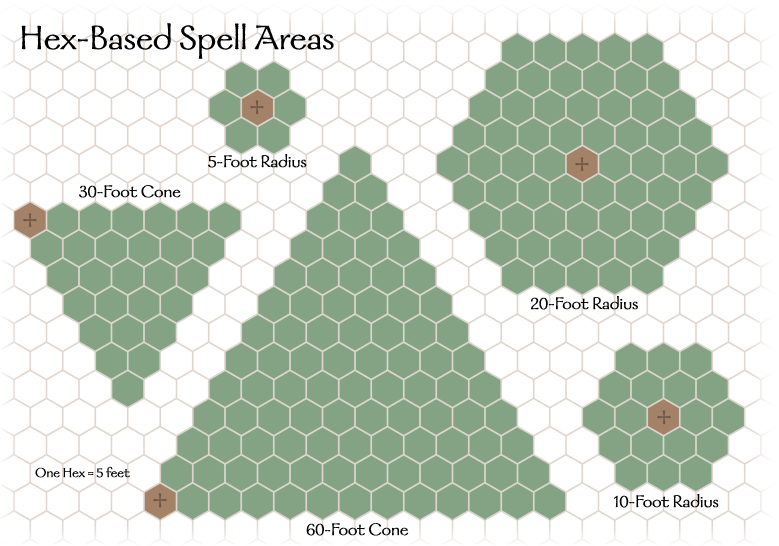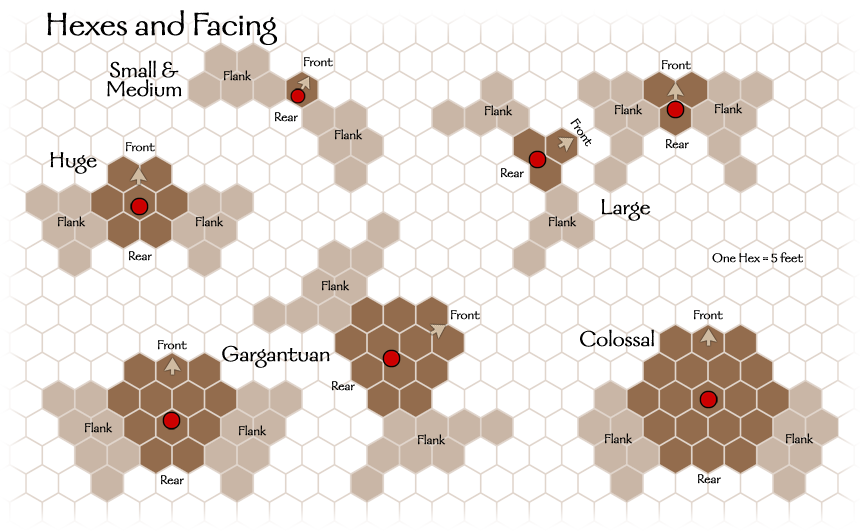Site Search
Tactical affairs such as movement are best handled on a grid, but the grid need not be a bunch of squares. This variant replaces the squares with hexagons. (Hex grid paper and mats are available at many hobby stores.)
The primary advantage of this variant is that it eliminates the “every other square counts double” rule for diagonal movement, because it eliminates diagonal movement. Characters simply move from hex to adjacent hex, changing direction as they like. To determine the distance between two hexagons, just count hexes by the shorter path (in most cases, there will be a number of equally short paths).
Using a hex-based grid changes relatively little about the game, but poses a mapping dilemma for the GM. Most buildings and dungeons are based on 90-degree and 45-degree corners, so superimposing a hex-based grid on a structure leaves the GM with many partial hexagons, not all of which are big enough for a Medium creature. Use this variant only if you’re comfortable adjucating these partial spaces on the fly.
Depending on their size, creatures take up one or more hexagons on the grid, as shown in the accompanying diagram.
Spell areas change to accomodate the hex grid; refer to the diagram below.


The hex-grid variant works well in conjunction with the facing variant, giving your d20 game more of the feel of a tactical skirmish wargame. If this suits your gaming group, use the diagram below to determine front, flank, and rear areas according to the facing rules.
